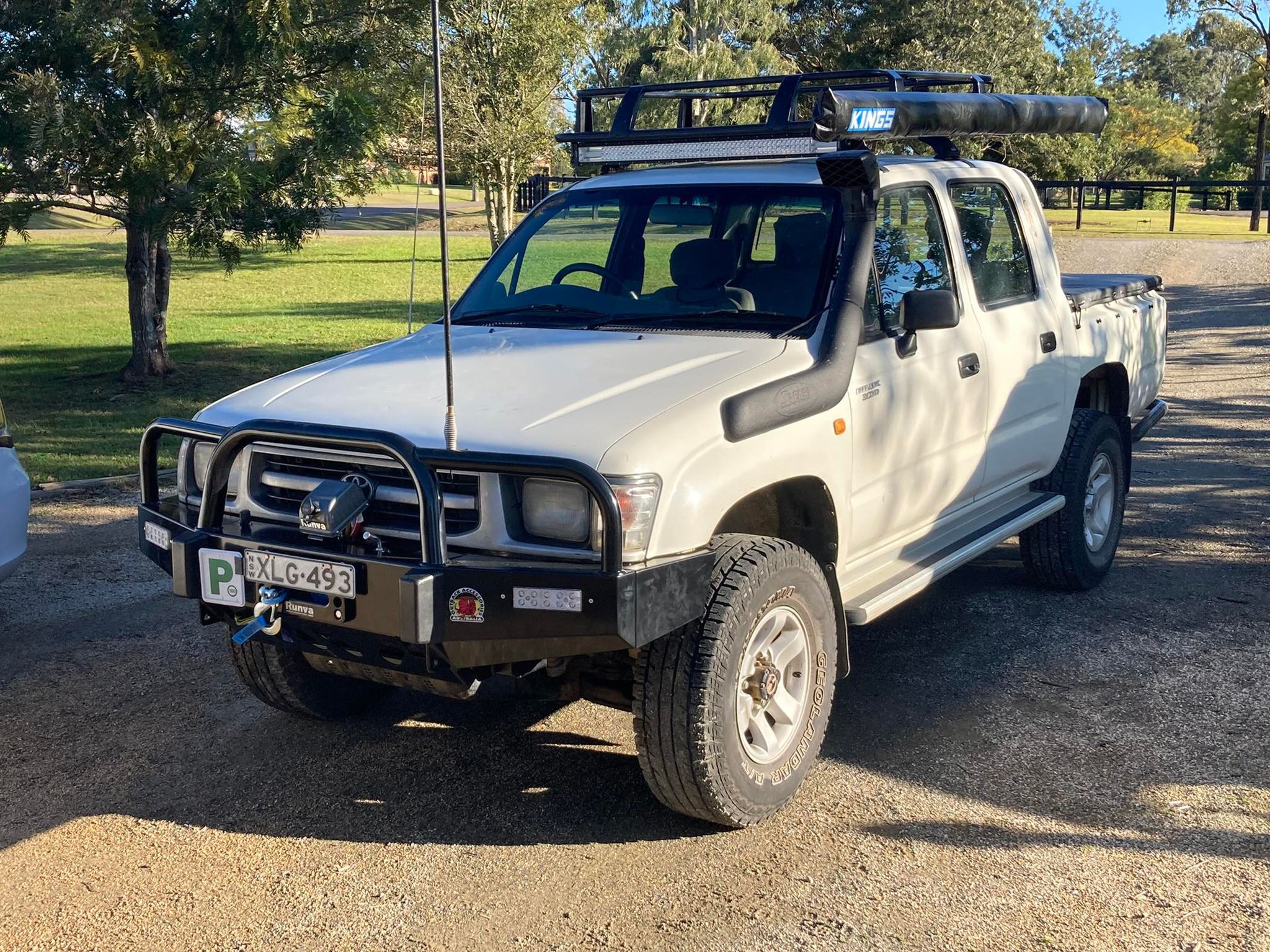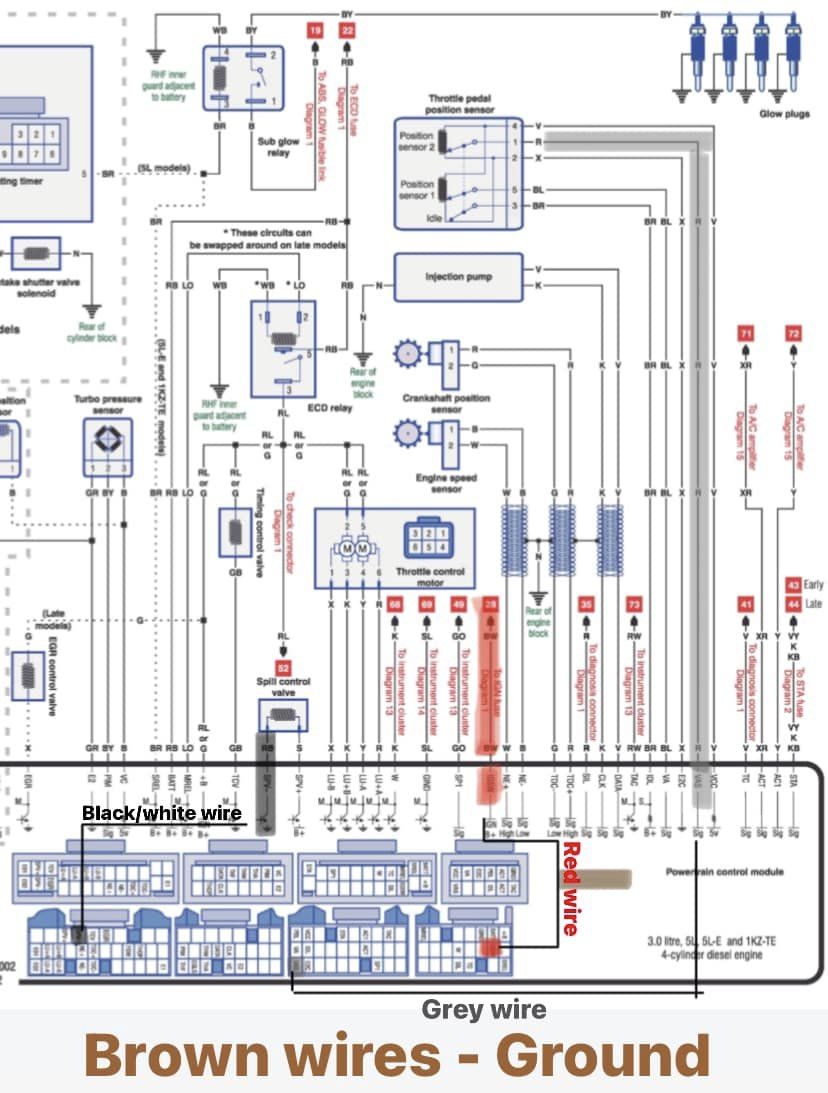Valuable Insights for KZN165 Hilux Owners
For those who own or are considering purchasing a KZN165 Hilux, here's essential information tailored just for you.
Common Issues to Address: The KZN165 often grapples with overheating problems, typically stemming from inadequate maintenance and faulty temperature gauges. Here are some practical tips to prevent your vehicle from running too hot:
- Service or replace injectors every 90,000 kilometers.
- Check for leaks in the fan hubs. Ensure they are rotatable by hand but not excessively loose. Test when the engine is cold.
- Consider replacing the factory temperature gauge with a higher quality aftermarket one to avoid potential overheating issues.
- SR5 models may encounter issues with the vacuum-operated 4x4 system, but these are usually manageable and straightforward to fix. Keep an eye on the CV joints as they tend to wear out faster in SR5 models due to the constant engagement of the hubs.
Differential Ratios: Understanding the differential ratios can optimize your vehicle's performance for specific applications. Here's a breakdown of ratios for the 6th gen Hilux:
- KZN (3.0 turbo): 3.7-1
- LN (3.0 NA): 4.55-1
- VZN (3.4 V6): 4.1-1
- RZN (2.7): 4.3-1
Deciphering Engine Codes: While many OBD2 scanners might not work for our Utes due to the JOBD protocol, you can still diagnose issues by counting the flashes of the check engine light. Here's how:
- For early models (throttle cable), bridge the TE1 and E1 prongs.
- For late models (drive by wire), bridge the TC and E1 prongs.
- Refer to the codes in the manual to identify specific issues and clear them accordingly.
Enhancing Engine Performance: The 1KZ-TE engine in our Utes, while a turbo diesel, may lack power. Various modifications can improve performance, such as adjusting the fuel pump or upgrading the turbo.
Pre-Facelift vs. Facelift and SR5 vs. Base Model: Distinguishing between pre-facelift and facelift models is crucial, as is understanding the differences between SR5 and base models. Look for visual cues like hood humps and grille styles to identify facelift models.
Fuel Tank Capacities: Understanding the fuel tank sizes ensures proper planning for long journeys. Tank capacities vary depending on the cab type:
- Single cabs and extra cabs:
- 2WD: 69L
- 4WD: 77L
- Dual cabs: 66L
Additional Considerations:
- Address electrical concerns when installing additional lighting systems.
- Consider aftermarket towing mirrors for SR5 models.
- Invest in a Haynes workshop manual for comprehensive maintenance guidance.
Additional Tip: Resetting the Timing Belt Light
While attending to the dashboard, a helpful trick for resetting the timing belt light came to light. Behind the dash, two holes are visible, one likely housing a screw. The choice of hole depends on the vehicle's mileage. To reset the timing belt light, the screw needs to be switched from its current position to the other hole. This action resets the light for another approximate 140,000 kilometers, aligning with the factory recommendation for timing belt replacement. When the light reappears after another 140,000 kilometers, the process can be repeated by relocating the screw to the alternate hole. This simple method ensures the vehicle remains aligned with its maintenance schedule.

Additional Tip: Timing Control ValveContinuing with our maintenance insights, it's time to address the Timing Control Valve (TCV) – a component that can be quite a nuisance to deal with. The majority of our Hilux vehicles are equipped with a pump resembling the one shown below. If yours matches this description, the correct TCV for you is the Denso 2301067010. Precision is crucial here, as there's another TCV with just one digit difference, intended for the version with resistors on the side, which won't work for your setup. While brand new from Toyota might set you back $602, a genuine Denso TCV can be purchased from Hi Tech Diesel Injection for $299, complete with free shipping.
Regarding the replacement process, it's a bit tricky. Loosening the mount and adjusting the power steering line upwards slightly can facilitate access. Additionally, undo the rear mount from the pump and unbolt it from the block. This maneuver makes accessing the two cap head bolts securing the TCV much easier. Best of luck with the replacement.
Before diving into purchasing a new TCV, it's wise to test the wiring first. Additionally, I've included a photo below of the resistor on the ECU that controls the TCV. Sometimes, these resistors can burn out, necessitating the soldering of a new one. Opening the ECU isn't overly complicated, and it provides peace of mind before investing $299 in a seemingly small valve.
Additional Tip: DP Chip Install Here's a comprehensive guide for those planning to install a DP34 tuning chip into their vehicle. Finding instructions and ECU wiring diagrams for specific car models can be a challenge, so I thought I'd share this post to assist future enthusiasts. Many thanks to Alex on Discord for crafting a wiring diagram, which I've tailored to accommodate the DP chip. You can access the revised, high-quality wiring diagram in the files section of this group under "engine_management".
For the DP Chip installation, here are the designated wires:
Loom 1:
- Red: Ignition
- Grey: Throttle Position Sensor
- Brown: Ground
Loom 2:
- White (wrapped in black): Fuel Control (Spill Valve)
- Brown: Ground
These wire colors are clearly indicated on the wiring sheet for ease of reference. Happy tuning!
Additional Information: Australian Government Vehicle Data File!
We're thrilled to share that we've added a file from the Australian Government containing vehicle data information. This document offers a simplified breakdown of your car's specifications and details, straight from the authoritative source.
You can access this valuable resource in the group's files section under the title "Australian Government Vehicle Data." It's a fantastic reference point for understanding your vehicle's key features and specifications.
Feel free to download the file and explore the wealth of information it provides about your car. It's a handy resource for enthusiasts and owners alike.






